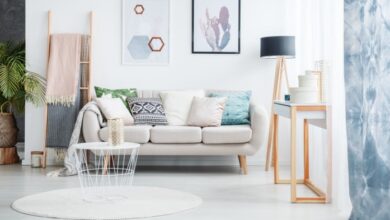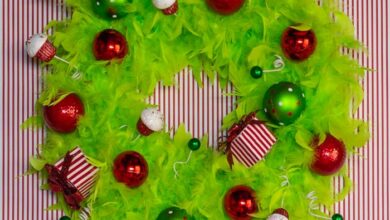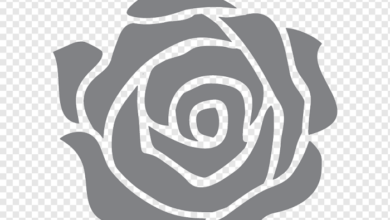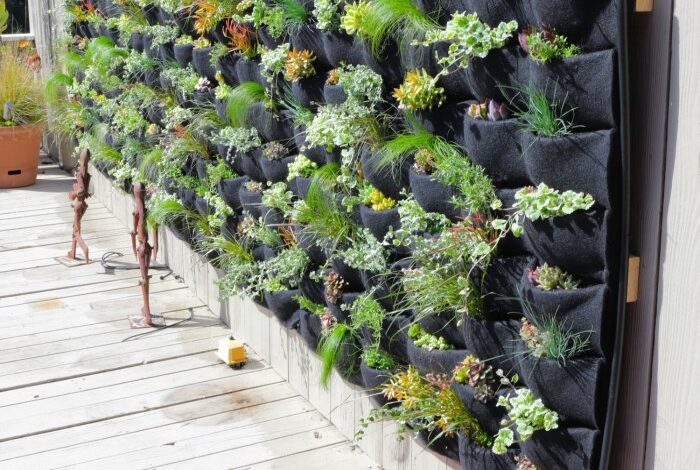
DIY wall mounted plants aka living art, is a fantastic way to add a touch of nature and personality to your home. Wall-mounted plants are not only visually stunning, but they also offer a number of practical benefits.
They can help to purify the air, create a more relaxing atmosphere, and even add a touch of color to your walls. Whether you’re a seasoned plant parent or just starting out, there’s a wall-mounted plant display perfect for you.
In this blog post, we’ll guide you through the process of creating your own DIY wall-mounted plant display, from selecting the right plants and materials to building the structure and ensuring safety. Get ready to transform your walls into vibrant living art!
Introduction to DIY Wall-Mounted Plants
In the realm of modern home decor, the trend of incorporating living art has taken root, and DIY wall-mounted plants have emerged as a captivating and innovative way to bring the beauty of nature indoors. This creative approach transforms ordinary walls into vibrant green oases, infusing spaces with a sense of tranquility and life.
The benefits of incorporating living art into indoor spaces are numerous. Wall-mounted plants not only enhance the aesthetic appeal of a room but also contribute to a healthier and more refreshing environment. These living masterpieces act as natural air purifiers, improving air quality by absorbing harmful toxins and releasing oxygen.
Advantages of Wall-Mounted Plants
Wall-mounted plants offer a unique set of advantages over traditional potted plants, making them a compelling choice for both aesthetic and practical reasons.
- Space-Saving:Wall-mounted plants are ideal for maximizing space in small apartments or homes with limited floor area. By utilizing vertical space, they free up valuable floor space for furniture and other decor.
- Unique Aesthetic:Wall-mounted plants create a visually striking and contemporary look that can transform a bland wall into a focal point. Their vertical arrangement adds a touch of dynamism and intrigue to any room.
- Versatility:Wall-mounted plants can be adapted to various spaces and styles. They can be incorporated into minimalist, modern, bohemian, or even traditional decor, seamlessly blending with the existing design.
- Easy Maintenance:Many wall-mounted plant systems are designed for effortless care. They often feature self-watering features or integrated drainage systems, reducing the need for frequent watering and repotting.
Materials and Tools for DIY Wall-Mounted Plants
Creating a living wall display requires careful selection of materials and tools. The right materials will not only enhance the visual appeal of your plant display but also ensure the well-being of your plants.
Materials for DIY Wall-Mounted Plants
Choosing the right materials for your wall-mounted plant display depends on several factors, including the type of plants you’re using, the desired aesthetic, and your budget. Here are some common materials:
- Wood:A versatile and readily available material, wood offers a natural look and can be easily customized. You can use reclaimed wood for a rustic feel or opt for polished wood for a modern aesthetic. Examples include pine, cedar, or oak, depending on your preference.
- Metal:Metal offers durability and a contemporary look. You can use metal sheets, pipes, or wire to create unique and eye-catching plant holders. Examples include galvanized steel, copper, or aluminum, each with its own unique properties.
- Rope:Rope provides a natural and rustic look, perfect for creating macrame plant hangers or hanging planters. Choose natural fibers like cotton, hemp, or jute for a sustainable and eco-friendly option. Different rope thicknesses can be used to create varying levels of texture and strength.
- Macrame:Macrame is a traditional craft using knotted cords to create intricate patterns. It offers a bohemian and artistic touch to your plant display. Macrame can be used to create plant hangers, wall-mounted shelves, or even entire plant walls. It allows for a diverse range of creative expressions and can be adapted to different plant types and sizes.
- Plastic:Plastic offers a budget-friendly option and is available in a wide range of colors and styles. It’s lightweight and easy to work with, making it suitable for beginners. Consider using recycled plastic for a sustainable approach.
Tools for DIY Wall-Mounted Plants
To create your wall-mounted plant display, you’ll need a few essential tools:
- Drill:A drill is essential for creating holes in wood or metal for mounting your plant holders. A cordless drill provides flexibility and convenience.
- Saw:A saw is needed for cutting wood or metal to your desired size. A hand saw or a circular saw are suitable options depending on the material and the complexity of the project.
- Measuring Tape:Accurate measurements are crucial for ensuring your plant display fits perfectly on the wall and for creating symmetrical arrangements.
- Scissors:Scissors are necessary for cutting rope, wire, or fabric used in your plant display. Sharp scissors ensure clean cuts and prevent fraying.
- Glue Gun:A glue gun is helpful for securing small components, such as plant holders or decorative elements, to your base material. Hot glue provides a strong and quick bond.
- Screws and Anchors:Screws and anchors are needed to securely attach your plant display to the wall. Choose the appropriate size and type based on the weight of your display and the type of wall surface.
- Safety Glasses and Gloves:Always wear safety glasses and gloves when working with power tools or sharp objects. These will protect you from potential injuries.
Design Ideas for DIY Wall-Mounted Plants
The possibilities for designing your wall-mounted plant displays are endless. You can create a lush, tropical oasis, a minimalist modern arrangement, or a rustic farmhouse aesthetic, all using the same basic principles. Let’s explore some design ideas and get your creative juices flowing.
I love the idea of DIY wall-mounted plants, transforming bare walls into living art. It’s a great way to bring the outdoors in, and it’s so satisfying to see your green creations flourish. But sometimes, I get lost in the details and wonder, “What’s the bigger picture?” That’s when I need to step back and remember the bigger picture, like the potential of chatbots to revolutionize communication.
It’s fascinating to learn about the “bold chatbot david byttow secret” bold chatbot david byttow secret , which makes me think about the future of technology and its impact on our lives. But then, I’m right back to my plants, watering them and admiring their growth, knowing that even small acts of creation can bring joy and beauty to the world.
Design Styles for Wall-Mounted Plants
The style of your wall-mounted plant display should complement the overall decor of your space. Consider these popular design styles:
- Minimalist: This style focuses on simplicity and clean lines. Use a limited number of plants in simple containers, like geometric planters or hanging baskets. Opt for plants with clean foliage, like succulents or ferns.
- Bohemian: Embrace a free-spirited and eclectic vibe. Combine different plant types, sizes, and textures. Use colorful macrame hangers, vintage containers, and reclaimed wood to create a unique and personalized look.
- Rustic: Create a warm and inviting atmosphere with natural elements. Use reclaimed wood, metal, or woven baskets for containers. Opt for plants with a natural, unrefined look, like trailing vines or succulents.
- Modern: This style is all about sleekness and sophistication. Use geometric planters, metal frames, and modern hanging systems. Choose plants with bold, architectural shapes, like cacti or air plants.
Plant Arrangement Techniques
Arranging your plants is key to creating a visually appealing display. Consider these techniques:
- Symmetry: Create a balanced look by placing plants in a symmetrical pattern. This works well for minimalist and modern styles.
- Asymmetry: Break up the symmetry for a more organic and dynamic look. This is perfect for bohemian and rustic styles.
- Focal Point: Use a large plant or a unique container as a focal point to draw the eye. This helps create a sense of balance and interest.
- Height Variation: Create visual interest by using plants of different heights. This helps break up the monotony of a wall display.
- Texture Contrast: Mix plants with different textures, like smooth leaves, spiky foliage, or trailing vines. This adds depth and visual interest.
Examples of DIY Wall-Mounted Plant Projects
Here are some examples of DIY wall-mounted plant projects to inspire you:
- Succulent Wall Garden: Create a minimalist and modern look with a wall garden made from succulents planted in individual geometric planters. Attach the planters to a wooden board using screws or hooks. This project is relatively easy and requires minimal maintenance.
DIY wall-mounted plants are a fantastic way to add a touch of life and greenery to any space. They’re especially great for smaller rooms where floor space is limited, and they can really transform the look and feel of a room.
I’m always on the lookout for inspiration, and I recently stumbled upon a stunning laundry room makeover on elsies laundry room tour before after that featured some beautiful wall-mounted plants. It really inspired me to try my hand at creating some living art in my own home!
- Macrame Hanging Planters: Embrace the bohemian aesthetic with macrame hanging planters. You can find pre-made macrame hangers or learn to make your own. Use a variety of plants with trailing stems, like pothos or spider plants, for a cascading effect.
- Reclaimed Wood Shelf: Create a rustic and farmhouse look with a reclaimed wood shelf. Attach the shelf to the wall and place potted plants on top. You can also add a few hanging baskets for a more layered look.
- Geometric Metal Planters: Create a sleek and modern look with geometric metal planters. Attach the planters to a metal frame using screws or hooks. Choose plants with bold, architectural shapes, like cacti or air plants.
Plant Selection and Care: Diy Wall Mounted Plants Aka Living Art
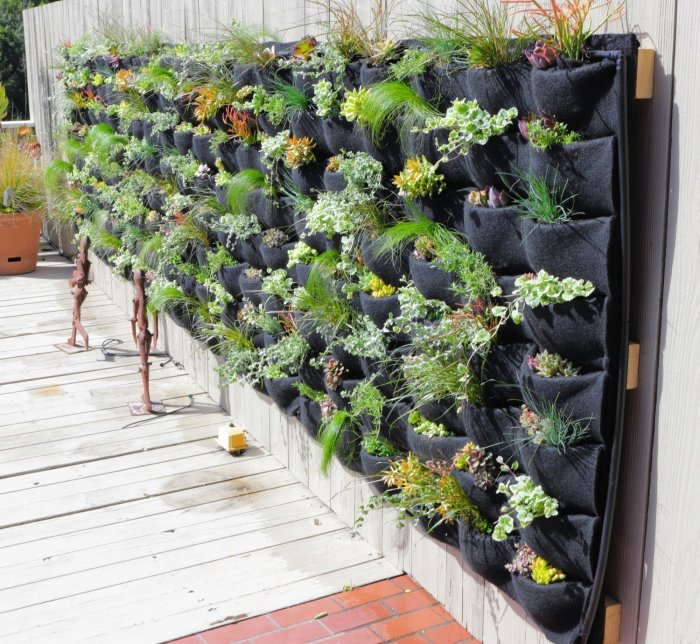
Choosing the right plants for your wall-mounted display is crucial for their success and the overall aesthetic appeal of your living art. Consider the plant’s light requirements, water needs, and growth habits, along with your personal preferences and available space.
Light Requirements
The amount of light your plants need will depend on the species and the location of your wall-mounted display. Most plants thrive in bright, indirect light, but some can tolerate low light conditions.
- Bright, indirect light:These plants prefer a spot that receives plenty of natural light but is not exposed to direct sunlight, which can scorch their leaves. Examples include Snake Plants, ZZ Plants, and Spider Plants.
- Low light:These plants can tolerate dimly lit areas and may even thrive in rooms with little natural light. Examples include Pothos, Peace Lilies, and Cast Iron Plants.
Watering Needs
Watering frequency is another important consideration when selecting plants for wall-mounted displays. Some plants need to be watered frequently, while others can tolerate drier conditions.
I love the idea of DIY wall-mounted plants, it’s like bringing the outdoors in! But sometimes, you need a little more privacy, and that’s where a frosted pattern privacy glass DIY project comes in handy. You can find a great tutorial on how to create your own unique designs here , and then use the frosted glass to create a stunning backdrop for your living art.
- Frequent watering:These plants require consistent moisture and should be watered when the top inch of soil feels dry. Examples include Ferns, Philodendrons, and Peace Lilies.
- Infrequent watering:These plants can tolerate periods of drought and should be watered only when the soil is completely dry. Examples include Succulents, Cacti, and Snake Plants.
Growth Habits
The growth habit of a plant will influence its suitability for wall-mounted displays. Some plants grow upright, while others trail or cascade.
- Upright growth:These plants are well-suited for wall-mounted displays where they can be trained to grow upwards. Examples include Prayer Plants, Calathea, and Monstera Deliciosa.
- Trailing or cascading growth:These plants are ideal for wall-mounted displays where their foliage can drape down or cascade over the edges. Examples include Pothos, String of Pearls, and Spider Plants.
Essential Plant Care Practices, Diy wall mounted plants aka living art
Once you’ve chosen your plants, it’s important to provide them with the proper care to ensure their health and longevity. This includes watering, fertilizing, and pest control.
- Watering:The frequency of watering will depend on the plant species and the environment. It’s important to check the soil moisture level before watering, and to avoid overwatering, which can lead to root rot. You can also use a moisture meter to monitor soil moisture levels.
- Fertilizing:Fertilizing your plants regularly will provide them with the nutrients they need to thrive. Use a balanced liquid fertilizer diluted to half strength and apply it every 2-4 weeks during the growing season.
- Pest control:Keep an eye out for common plant pests such as aphids, mealybugs, and spider mites. You can use a mild insecticidal soap or neem oil to control pests. Regularly inspect your plants for signs of infestation and take immediate action if necessary.
Step-by-Step Guide for Creating a DIY Wall-Mounted Plant Display
This section will guide you through the process of creating a stunning DIY wall-mounted plant display using a specific example. We’ll break down the steps, from building the structure to attaching the plants, ensuring stability and a visually appealing result.
Designing the Structure
The foundation of your wall-mounted plant display is the structure. It’s the framework that holds your plants and determines the overall design. You can create a simple, geometric structure or something more elaborate, depending on your preference. For this example, we’ll design a rectangular structure using wooden planks and metal brackets.
- Materials:
- Wooden planks (1×4 inches) – 4 pieces
- Metal brackets (L-shaped) – 4 pieces
- Screws
- Wood glue
- Steps:
- Cut the wooden planks to your desired length. This will determine the dimensions of your rectangular structure.
- Using wood glue and screws, attach the metal brackets to the ends of the planks. The brackets will provide support for hanging the structure on the wall.
- Assemble the rectangular frame by connecting the planks at the corners using wood glue and screws.
- Allow the glue to dry completely before proceeding to the next step.
Attaching the Plants
Once the structure is ready, it’s time to attach your plants. There are several methods you can use, depending on the type of plants and your desired look.
- Using hanging baskets:
- Select hanging baskets that complement your structure’s design. Choose materials like metal, wire, or macrame, depending on your aesthetic.
- Secure the hanging baskets to the structure using hooks or wires. Ensure the baskets are evenly spaced for a balanced look.
- Plant your chosen plants in the baskets, ensuring adequate drainage and soil.
- Using plant hangers:
- Select plant hangers that match the structure’s design. Choose materials like rope, macrame, or metal.
- Attach the plant hangers to the structure using hooks or clips. Ensure the hangers are securely fastened.
- Place your plants in the hangers, ensuring they are properly supported.
- Using a combination of methods:
- You can mix and match hanging baskets and plant hangers for a dynamic and visually appealing display.
- Experiment with different plant sizes and textures to create depth and interest.
Ensuring Stability
To ensure the stability of your wall-mounted plant display, it’s crucial to use sturdy materials and secure mounting methods.
- Use heavy-duty brackets:
- Select metal brackets designed for supporting weight. Ensure they are securely attached to the wall using appropriate screws.
- Consider the weight of the plants and the structure when choosing brackets.
- Secure the structure to the wall:
- Use screws that are long enough to penetrate the wall and provide a strong hold.
- If your wall is made of drywall, use wall anchors for added stability.
- Distribute the weight evenly:
- Ensure the plants are evenly distributed across the structure to prevent any imbalances.
- Avoid placing heavy plants at the edges of the structure.
Safety Considerations and Tips
Creating a stunning DIY wall-mounted plant display is a rewarding endeavor, but it’s crucial to prioritize safety throughout the process. From selecting the right plants and materials to ensuring proper installation, a few key considerations can make all the difference in the longevity and stability of your living wall art.
Weight Distribution and Structural Integrity
Before hanging any plants, it’s essential to assess the weight they will exert on the wall. Consider the weight of the pots, soil, and plants themselves. A heavier plant will require a stronger support system. Here’s a guide to help you make informed decisions:
- Choose lightweight materials: Opt for lightweight pots made from materials like plastic or ceramic, rather than heavy clay pots.
- Use sturdy mounting hardware: Heavy-duty hooks, brackets, or shelves designed for the weight of your plants are crucial for a secure installation.
- Distribute the weight evenly: Avoid overcrowding a single area with heavy plants. Spread them out across the wall to distribute the weight evenly.
Plant Health and Safety
While ensuring the structural integrity of your wall-mounted display is important, it’s equally crucial to prioritize the health and safety of your plants.
- Adequate drainage: Ensure each pot has drainage holes to prevent waterlogging, which can lead to root rot. Use a drainage layer in the pot to allow excess water to escape.
- Light and air circulation: Choose plants that thrive in the lighting conditions of your wall and ensure adequate air circulation to prevent mold and disease.
- Regular maintenance: Monitor your plants regularly for signs of stress, pests, or diseases. Water them appropriately and prune as needed.
Practical Tips for Longevity
To maximize the longevity of your DIY wall-mounted plant display, consider these practical tips:
- Choose the right location: Select a wall that receives adequate sunlight and ventilation. Avoid areas prone to excessive moisture or drafts.
- Use a moisture-resistant sealant: Apply a sealant to the back of the pots and mounting hardware to prevent moisture damage to the wall.
- Inspect regularly: Periodically inspect the mounting hardware for signs of wear or looseness. Tighten or replace as needed.

